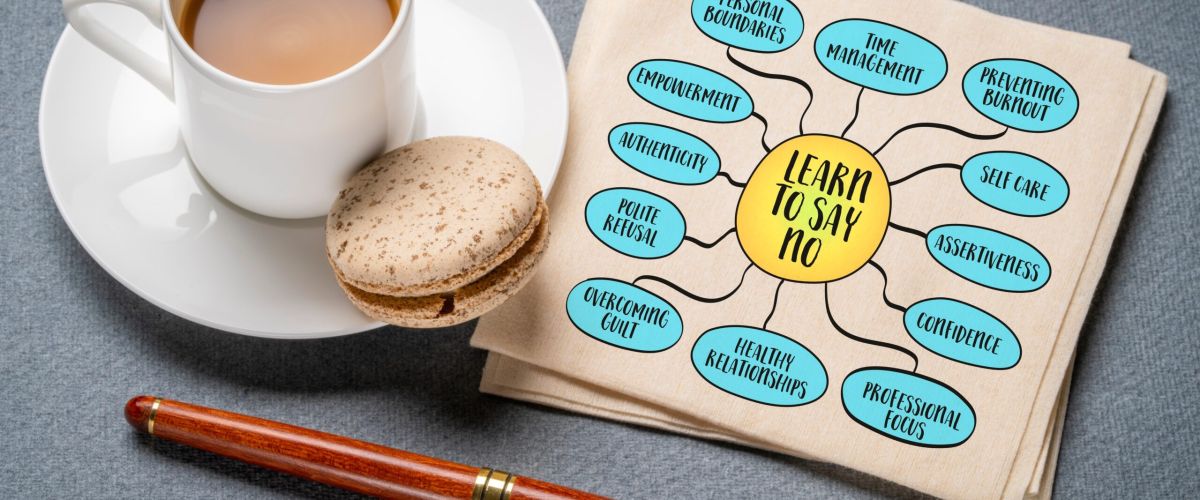The Life Changing Skill of Saying ‘NO’

Why Saying No Feels So Hard
If you’ve ever struggled to set boundaries, you’re not alone. The difficulty isn’t just about the moment—it’s about what lies beneath. For many, saying no feels risky because it triggers a fear of rejection or conflict.
If you grew up walking on eggshells or in unhealthy relationships, your mind might have learned that yes is the safer option. For others, it comes from people-pleasing tendencies or tying self-worth to how much you give.
Some say yes to avoid the discomfort of letting someone down, while others never learned to set boundaries in the first place. And for many, a scarcity mindset whispers that saying no means missing out on opportunities or relationships.
The Automatic Yes
Most of us know the feeling—someone asks for your time, energy, or commitment, and even though every part of you wants to say no, out comes the automatic yes.
Maybe it’s to keep the peace, to avoid disappointing them, or because it feels easier in the moment. Perhaps you even tell yourself you’re being kind, or maybe it’s simply what you’ve always done, and the familiarity feels safe.
When Saying Yes Feels Like Betrayal
Here’s the truth: when you walk away from a yes feeling stressed, uncomfortable, or resentful, it isn’t kindness—it’s self-betrayal. And when your heart isn’t in it, that disconnection is palpable.
Studies show that three out of four people admit to saying yes to things they later regret. For years, I was one of them. I thought agreeing—whether I wanted to or not—meant I was being kind, supportive, and more likeable but the reality was very different. Every forced yes left me drained, overwhelmed, and further away from the person I wanted to be. Resentment built up, and disappointment followed. Others could sense it too, because the “kindness” I thought I was offering never rang true.
When you say no with intention, you’re not closing doors—you’re aligning your life with what matters most. Each no becomes a yes to your energy, your values, and your future.
The Power of No
Learning to say no is transformative. It shifts the way you move through life.
No is not selfish—it’s an act of deep self-respect. It means you’re no longer living on autopilot or bending under the weight of expectation. Instead, you choose carefully, saying yes only to the things that genuinely matter to you.
With every no, you reclaim energy, time, and focus. You create space for the people, opportunities, and experiences that truly light you up—space built on authenticity, not obligation. And perhaps most importantly, you learn to put your own needs first—not at the expense of others, but in honour of yourself. From that place, every yes you do give carries more weight, more truth, and more meaning.
How to Start Saying No
If you’re ready to start saying no with more confidence, here are some practical strategies to help you honour your needs while maintaining kindness and integrity:
- Take a breath — instead of an instant yes, try: “Let me think about it and get back to you.”
- Be clear — “I’d love to help, but I need to say no this time.” is enough.
- Start small — practice in low-stakes situations to build confidence.
- Value yourself — conserving your energy means you can be present and authentic when it truly counts.
- Clarify your vision — hold a clear picture of the life you want, and let it shape your choices.
- Let go of guilt — you can care for others without carrying responsibility for their happiness.
- Practice out loud — rehearse saying no with someone you trust until it feels more natural.
- Define your boundaries — know your values so you can instantly recognise what doesn’t fit.
- Keep perspective — every no is also a yes to the life you’re intentionally creating.
Living in Alignment
As you practice, saying NO becomes easier and more natural. Each no strengthens your ability to create a life that honours your values and priorities. Saying no isn’t just about boundaries—it’s about living in alignment with what matters most. It’s about honouring your energy, your priorities, and your truth.
And far from pushing people away, a clear and kind no often draws them closer, because they can see and respect your clarity.
Reflection
Choose the right ‘Yes’. When you’re caught between yes and no, pause and ask yourself:
Am I saying yes because it’s true for me, or because I feel I should? Then choose the response that reflects your values, not your fears. Let your choice come from alignment, not obligation. Say yes only when it feels authentic to you.
The strategies above can help you say no in the moment—but lasting change comes from going deeper. With RTT and hypnotherapy, we’ll uncover and release the limiting beliefs that keep you stuck, rewiring the patterns behind the automatic yes. This is how real, lasting change happens.
Why wait? Get in touch today.